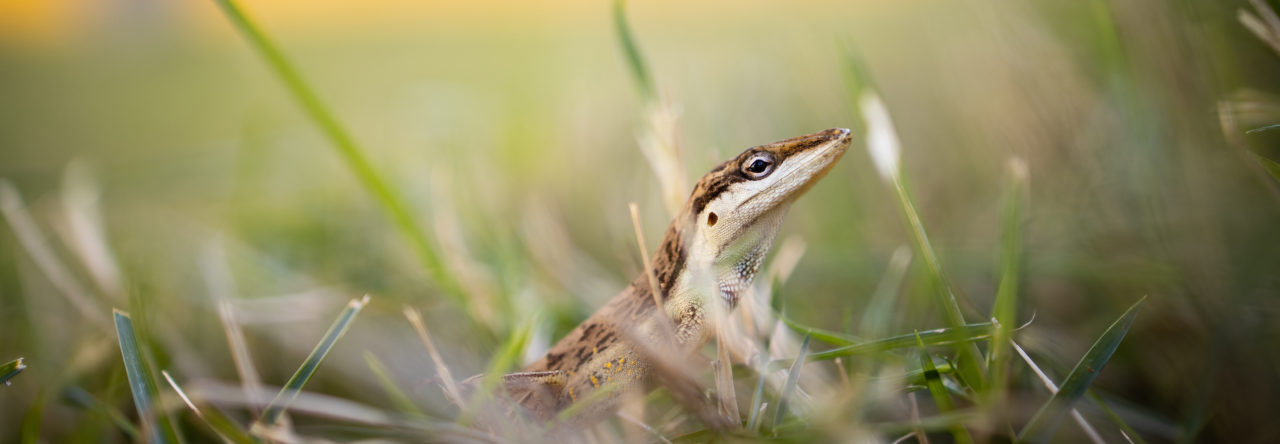
News-Journal/Mark Lane
The Daytona Beach News-Journal recently reported on a couple that has built an anole playground. Here’s the article:
The sign says “Lizard Land.” It’s a little sign. A lizard-sized sign, in fact. A sign marking a kind of lizard playground that Carol and Gary Mueller created in front of their home in Ormond by the Sea.
Anoles, small lizards that live around trees and eat insects, are a common sight in Florida yards. If you have enough time to sit very still outside, you’ve noticed their furtive movements up trees, down the side of the house and around the mailbox stand.
The Muellers have the time. “We’re totally retired,” laughs Gary, 70, a retired electrician. “Our biggest decision each day is whether to go to the ocean and fish or go to the river on the boat.”
One day they were sitting on the porch and noticed a particularly determined anole trying to make it to the top of a lawn ornament with a shiny globe on top.
“We were out there one time watching this little guy and he was trying like a dozen times to get up there,” recalled Gary. “So I thought, ‘I’ll make him a little bridge to get up there.’ ”
The little PVC ramp led to a more elaborate little lighthouse Gary made out of scrap wood laying around the garage. And that led to the miniature boathouse along with toy boats the couple found on the beach. And that led to the slide and the slide led to the little castle. It all turned into quite a little spread.
“The boathouse is their favorite part,” Carol. “It’s something to watch. They’re very smart little creatures.”
She said they now have a lizard population of about 15, “eight babies and seven big ones.”
It’s easy to tell them apart. “They’re very territorial, so each one sticks to its own part of the playground,” she said. Sometimes birds eat them but the local cats have mostly left them alone.
The current group of lizards are brown anoles, Anolis sagrei, a non-native lizard first noticed in the Florida Keys in 1887, according to the Florida Fish and Wildlife Conservation Commission, but not recorded in Volusia County until the 1980s.
The couple said they sometimes get green anoles, too, Anolis carolinensis, which are native to Florida. Their numbers are down because of competition from the brown anoles, but they’re holding on. And occasionally, the Muellers spot a third kind. “They look like little dinosaurs, I don’t know what they’re called,” Carol said.
Carol used to be a tram driver at Fort Wilderness at Disney World. “Casting felt I looked rugged,” she said. She liked the job and the people and being outdoors. She met her husband in the 1980s on New Year’s Eve. Both moved here from Orlando. They’ve been at their current home for two years.
“I don’t go there to Orlando anymore,” Gary said. “You need a helicopter to get there anymore.”
“Everything we need is in Ormond Beach,” agreed Carol.
Including the pleasures of sitting on the porch in the evening just watching lizards scamper around the garden.

Caption from article: A brown anole checks out a PVC ramp at Lizard Land in the yard of Ormond-by-the-Sea residents Carol and Gary Mueller. News-Journal/Mark Lane

Caption from article: Lizard tower is seen with an anole holding onto its side in the Lizard Land area of the yard of Ormond-by-the-Sea residents Carol and Gary Mueller. Photo courtesy Carol Mueller
xxx












